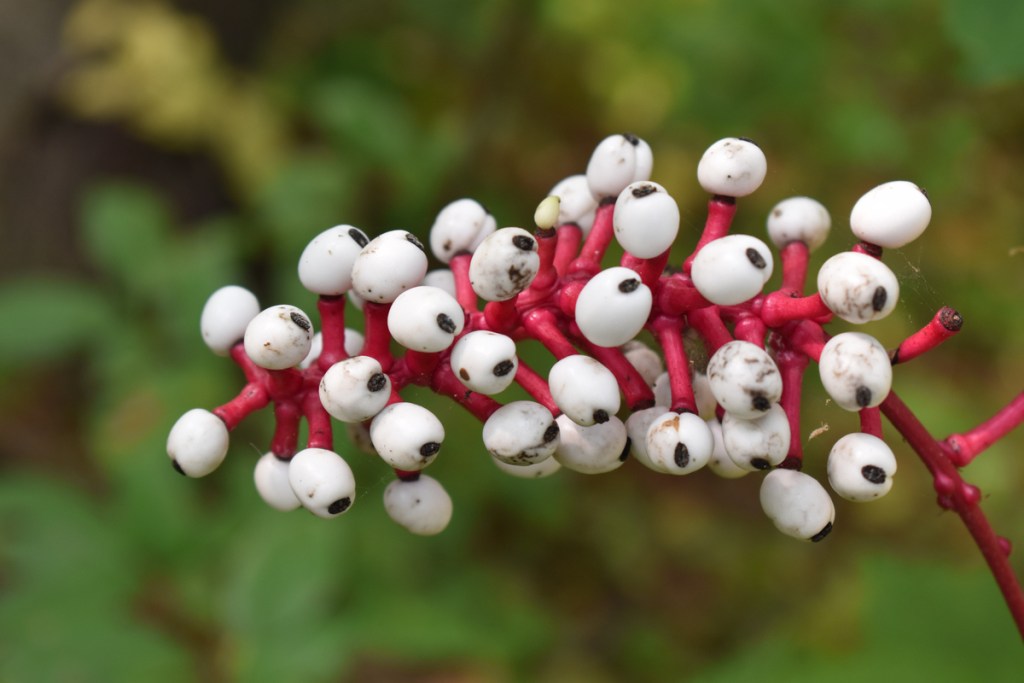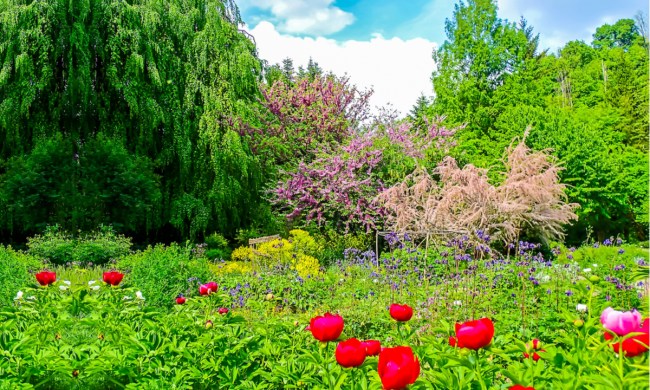There are plenty of directions you can go in when planting a spooky garden. There are fascinating but difficult-to-grow fungi like octopus stinkhorn. You could grow Halloween plants that are classically associated with witches, such as hellebore and wolfsbane.
For a more general Halloween atmosphere,e you could plant black cultivars of classic garden plants, like Halloween pansies or black elephant ears. However, if you’re looking for the spookiest, most spine-chilling plants to grow this season, then these six plants will have your garden looking scary good.
Oxalis triangularis
Oxalis triangularis is a type of wood sorrel, an edible plant that’s often found growing as a weed in lawns. However, this particular variety makes for an excellent Halloween ground cover. The dark purple leaves will give your yard or garden the appearance of an inky pool, while the bright flowers provide contrast. You could even use it to make your yard look like the night sky, with the flowers acting as stars!
Oxalis is a hardy plant, and it can tolerate most conditions. It prefers indirect light or mixed light and shade, with moist but not soggy soil.

Bat flower
Tacca chantrieri, also called bat flowers or bat plants, are unique-looking plants for any season. However, as the name suggests, they fit in particularly well during Halloween. Bat plants have large, dark green leaves that grow around the base of a tall stem that bears a black flower. The flower resembles a bat with outstretched wings.
Although this exotic flower looks intimidating, it’s fairly easy to grow. Bat plants are native to the continent of Asia, where they grow in tropical jungles. They’re adapted to partial shade, heat, and humidity. In drier or colder climates, you may have better luck growing them indoors.

Carrion plant
Carrion plants are a group of succulents in the Stapelia genus. They’re sometimes called starfish plants, since the flowers are distinctly star-shaped. These flowers are a big draw for some gardeners, as they look very unique in shape and color patterns. The flowers smell like carrion, or rotting meat, making them perfect for a zombie-themed Halloween display.
Different varieties of carrion plant have different smell strengths, and some gardeners are more sensitive to the scent than others. However, if you’re growing the plant outdoors, then you should be fine. Carrion plants need lots of bright, indirect light and warm temperatures. As succulents, they’re drought tolerant and need only a little water. Just keep in mind that they are sensitive to the cold.

Black prince snapdragon
Snapdragons are a fairly common garden flower, but they can be an impressive addition to Halloween decor as well. Snapdragon seed pods strongly resemble skulls, which is spooky enough on its own. A good way to bolster the fear factor is to start with black prince snapdragons. Black prince snapdragons have dark red-purple blooms.
Snapdragons enjoy rich, well-draining soil and a sunny spot. Let the soil dry out between watering and avoid getting the flowers wet. Wet flowers and leaves are more likely to burn or rot than dry ones are.
Voodoo lily
Voodoo lily, devil’s tongue lily, snake palm, konjac — no matter what you call it, this plant is stunning. It’s tall, with a pitcher or cup-shaped flower that has a single long spadix protruding from the center. These flowers come in a variety of colors, but for Halloween, we recommend the classic dark purple-black flowers. Similarly to the carrion flower, these lilies produce a smell like rotting meat, to attract pollinators. However, when grown outdoors, the scent is rarely unbearable and can add an unsettling atmosphere to your Halloween garden.
Plant voodoo lilies in rich soil with plenty of organic matter. It’ll tolerate most light amounts, but, for best results, plant your voodoo lily in partial shade. Voodoo lilies are more tolerant of too much water than not enough water, so take that into account when watering your lily. They need a lot of nutrients, so if you have poor soil you may need to supplement with fertilizers.

Doll’s eyes
If you want your Halloween visitors to feel unsettled, then doll’s eyes, or white baneberry, might be a good choice for you. This plant is fairly ordinary looking, until it begins producing berries. The berries are white, oblong, and have a black spot on the end. They look remarkably like eyes. They’re also toxic to most creatures except birds, which seem to enjoy them. Doll’s eyes are native to North America, where they grow at the edges of woodlands.
Doll’s eyes enjoy rich, thick soils, with consistent moisture. They thrive in partial shade, especially afternoon shade and morning sun. Their toxic nature means you don’t need to be concerned about deer or rabbits, but you may want to consider putting up a sign if you have small children or live in a highly trafficked area.
These six plants may be frightening to look at, but they aren’t scary to grow. Any of these plants would make an excellent, low-maintenance addition to practically any garden. Whether you’re looking for a short-term addition to your yard for Halloween or you want a year-round spooky garden, these six plants are a great place to start.





